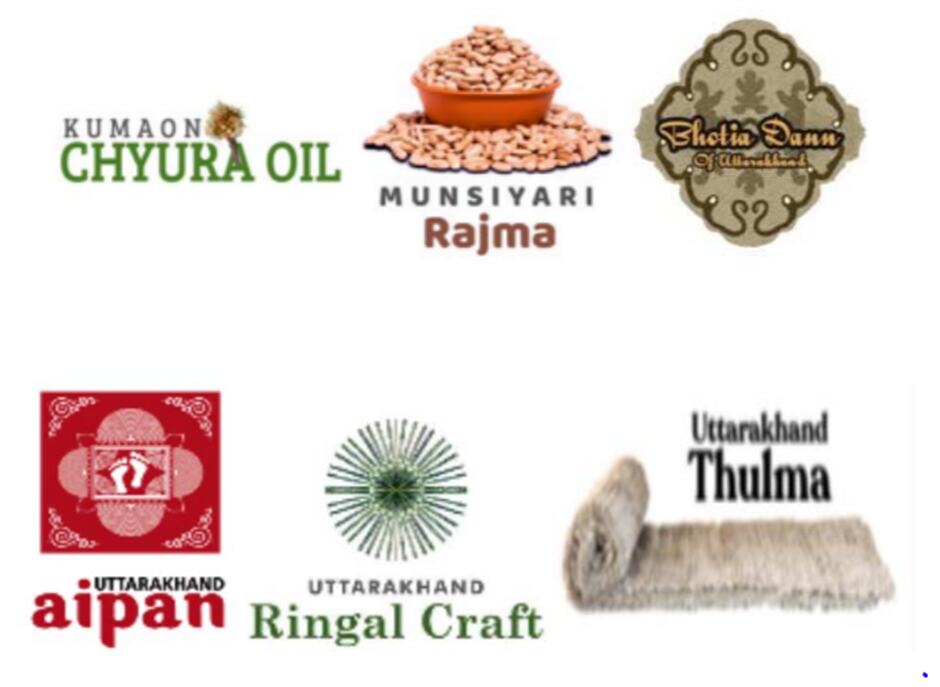Uttarakhand's distinct agri-products
Geographical uniqueness of Uttarakhand is characterised by GI tag-awarded agricultural products ranging from Tejpatta to multipurpose Chyura Oil and delicious Munsiyari Rajma — along with the distinctive art form of Aipan, among other things

The Himalayan state of Uttarakhand is unique in the sense that it has GIs for agricultural commodities, cultural artefacts as well as for products made of copper and animal furs. Let us first talk about agricultural products.
Tejpatta (May 2016)
The first product from Uttarakhand to get the GI tag in May 2016, with technical support and handholding by the GEF of the UNDP, was Tejpatta or Indian bay leaf (botanical name: Cinnamomum Tamala). Tejpatta is grown in all the hill districts of the state between the height of 1,000-2,000 metres in shaded areas. The commodity provides livelihood to over 10,000 farmers directly, as well as to intermediaries and traders engaged in the value chain of this 1,000-MT annual crop. A state-level committee — Uttarakhand Tejpatta Samiti — at Gopeshwar helps the farmers in getting better prices at the terminal market for this produce at Tanakpur and Haldwani in Kumaon and Rishikesh in Garhwal. The mentor organisation for Tejpatta is the Herbal Research and Development Institute at Gopeshwar in Chamoli district.
Kumaon's Chyura Oil (September 2021)
This Kalpabriksha or Kalpavriksha has been imbued with spiritual and cultural associations with the Himalayan communities from times immemorial. Growing naturally at an altitude of 1,600 meters, Chyura or Indian Butter Tree (Diplonema Butyracea), is an economically important, but lesser known and underutilised multipurpose tree of the Himalayas. Chyura grows extensively in Kumaon: in the districts of Pithoragarh Almora, Bageshwar and Nainital. Traditionally used for beekeeping, it is also a source for many products such as seeds for oil, flower nectar for honey, edible fruits that have medicinal properties, wood for small timber, fuel and furniture and leaves for cattle fodder. These trees have a tendency to grow in shadow valleys or on riverine settlements.
Chyura oil extraction is an important house practice of the local communities. It is used by almost every household as cooking oil for vegetables and parathas. The slightly bitter or overpowering flavour of the oil renders the food a unique taste. Known locally as the 'poor man's butter', this solidified Chyura butter or ghee is used mainly for domestic purposes, but surplus is sold in nearby towns. This ghee is said to have great nutritional and medicinal value.
The DICs have listed the immense potential of Chyura oil in a wide range of industries like pharmaceuticals, cosmetics (lip balms and other beauty products), confectionery, candles and ointments. The flower nectar can be used to make jaggery. Biodegradable plates and bowls can be made from the leaves of the Chyura tree, and the bark and root of the tree is known to have many healing and medicinal properties. This tree generally grows wild but is now being actively cultivated in certain parts of the state to enhance its utilization and create awareness of the products that can be churned out into a sustainable cottage industry for the locals. As every part of the tree is useful in some form or the other, it is called the Kalpabriksha or the 'wish-fulfilling tree'.
Munsiyari Rajma (September 2021)
We now come to Munsiyari Rajma. It derives its name from the town of Munsiyari (2,200 m), situated at the entrance of Johar valley. Prior to the 1962 India-China war, it was an important trade route with Tibet. As these areas receive a lot of snowfall, many villages are seasonally occupied during the months of May to early November. Rajma is generally grown as a major kharif pulse and in the spring season.
Munsiyari kidney beans have a unique off-white colour and beans are larger in size as compared to other varieties. These are known for delicious taste, high fibre and protein content.
This pulse is mainly grown by the Bhotiya community, with more than 80 percent of women — who have been recognised as women farmers — involved in the cultivation. The cultivation of rajma is done as a mixed crop in potato and maize fields. This small-sized kidney bean has a unique and subtle texture, softness, sweetness and aroma and takes 25 to 30 minutes less cooking time as compared to other varieties of rajma.
Uttarakhand Aipan (September 2021)
In addition to these agricultural commodities, there is a unique cultural artefact which has received the GI. Hailing from the Kumaon region of Uttarakhand, Aipan is a ritualistic folk art. Aipan art originated from Almora in Uttarakhand, which was founded during the reign of the Chand dynasty. It flourished during the reign of the Chand dynasty in the Kumaon region. The designs and motifs are motivated by the beliefs of the community and various aspects of nature.
Aipan is created to memorialise auspicious moments, festivals, and even rites carried out upon the death of a person. It is locally believed in Kumaon that the art form provides protection against evil. While the art form was once only found on the floors and walls of homes, it is now found in a variety of everyday goods and clothes. From 2015, Aipan motifs have been displayed in government offices and buildings. Some of the government buildings included Garhwal Mandal Vikas Nigam (GMVN), Kumaon Mandal Vikas Nigam (KMVN) and Uttarakhand Power Corporation Limited (UPCL). It is also marketed online by the UHHDC.
Next week, the column shall take up the remaining GIs of Uttarakhand, viz copper ware produced by the Tamtas of Almora, the Thulma shawl, Ringal bamboo craft and the Bhotiya Dann.
Views expressed are personal



